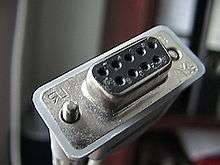Serial Programming
This book explains different aspects of serial data communication. Serial data communications is the foundation for most forms of data communications used with modern computing devices. The focus of the articles in this book will be around the implementation of RS-232 (aka RS-232C, aka V.24, aka EIA-232D, etc.) based serial data communication and will explore a wide range of implementations and uses for serial data transfer.
Book Contents
- General
- Introduction and OSI Network Model
- RS-232 Wiring and Connections
- Typical RS232-Hardware Configuration
- Low-Level serial Interface Hardware
- Specific Programming Environments
- Serial Data Communications in DOS
- TAPI communications in Windows
- Serial communications in Linux and Unix
- Unix V7 Serial Programming (ancient)
- termio: System V terminal I/O (improves on V7)
- termios: POSIX terminal I/O (improves on termio)
- Serial communications using Java
- Programming serial Devices
- Serial Programming Applications
- Forming Data Packets
- Error Correction Methods
- Two Way Communication
- Serial Data Networks
- Practical Application Development
- IP over Serial Connections
- Appendix: communications channels that are very similar to RS-232
- Appendix: communications channels that are technically serial but really quite different from RS-232 (these will soon move to a different book)
Resources
See Subject:Computer engineering for other kinds of low-level serial interface hardware that typically have the same high-level programming interface as RS-232 (RS-422, RS-423, RS-449, RS-485, MIL-STD-188, Universal Serial Bus (USB), etc.) and hardware that happens to be serial (Serial ATA, Wifi, Ethernet, etc), although it usually uses a very different high-level protocol.
Related Books
External Links to Resources
- ACCESS.bus
- Serial Peripheral Interface Bus
- Beyond Logic Serial Interfacing Articles
- Serial Port Testing with C
- Tronisoft's Printable ASCII Serial Port Crib Sheets
- Example of asynchronous data
